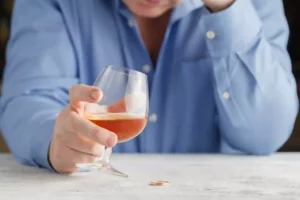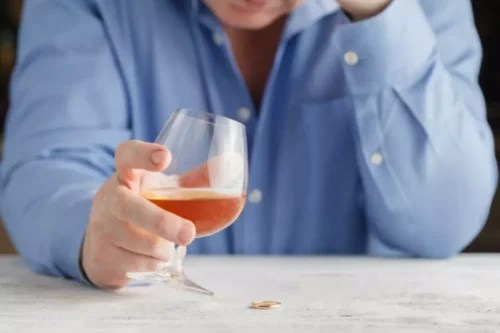Drunken driving is a persistent problem But there may be a technological solution.

From 1973 to 2014, there was an 80 percent reduction in the proportion of drivers who were alcohol impaired during weekend nights (7.5 to 1.5 percent), a high-risk period for driving while impaired (Berning et al., 2015). Fatalities attributable to alcohol-impaired driving crashes also saw dramatic decreases over this period of time. Alcohol-impaired driving crash fatalities decreased by almost 40 percent from 1982 to 2015 (NCSA, 2016a; Voas and Lacey, 2011). A 9 percent decrease in the risk of alcohol-impaired motor vehicle crash fatalities across age and sex for both drivers and passengers (Hadland et al., 2017).
Share this chapter
- Road users who are impaired by alcohol have a significantly higher risk of being involved in a crash.
- Jurisdiction is complicated by “competing claims of federal, tribal, and state sovereignty manifested in a complex array of laws that create a system of jurisdiction based on location, type of crime, race of the perpetrator, and race of the victim” (Harvard Law Review, 2016, p. 1687).
- These passive systems could be ready and in the vehicle soon and would be able to detect impairment to stop drunk driving.
- 3 High-risk drinking is defined in this study as four or more drinks on any day among women and five or more drinks on any day among men (Grant et al., 2017).
- Robert Martinson, a famous American sociologist and former civil rights activist, after decades of studying prisoner rehabilitation, famously proclaimed, ‘nothing works’.
- The United Kingdom has a standard drink size of 8 grams of pure alcohol; in Australia a standard drink is 10 grams, in the United States it is 14 grams, and in Japan it is 19.75 grams (WHO, 2014).
Nonalcoholic social drinkers were defined in the study described by Aston and Liguori (2013) as moderate drinkers who (1) consumed 1 to 4 alcoholic beverages at least twice per week, with each drink containing the equivalent of 1 oz. There are inherent differences in how specific jurisdictions govern that shape the alcohol and driving policy environment. AI/AN territories, for example, have unique complexities of tribal sovereignty that have implications for how crimes such as alcohol-impaired driving are handled.
SITUATIONAL FACTORS FOR ALCOHOL-IMPAIRED DRIVING

In addition to encouraging greater alcohol consumption among younger audiences, the alcohol industry’s marketing promotions and sponsorships may also target women and other high-risk and/or vulnerable populations (Babor et al., 2018). It is also important to recognize that there may be a basic conflict of interest for the alcohol industry between the need to maintain profitability and growth and efforts to reduce the prevalence of underage drinking and intoxication, both of which can lead to alcohol-impaired driving. Researchers estimated that in 2001 (the most recent year for which these estimates are available), underage and pathological drinking accounted for between 37.5 and 48.8 percent of consumer expenditures on alcohol (Foster et al., 2006). Thus, were the population to drink in a fully legal and nonpathological fashion, the industry could lose nearly half of its revenues, and the government would lose a large amount of its tax revenues as well. For example, the Washington study only compares drivers who had lucky near misses with those who were caught driving just above the limit.
Why did the Designated Driver Campaign succeed?

Five percent of the potential UK tax take, and about ten percent of the US equivalent, is lost to tax evasion, a huge fraction of which is driven by paying cash and not declaring the transaction. Even people who do this, who would never think of themselves as criminals, become criminals under the conditions of low enforcement and little moral cost. In the United Kingdom, there are not many studies with research designs that credibly isolate the impact of these changes. Fortunately, parts of the United States adopted a similar range of policies over the same period. Of course, many things have happened in the last 40 years that contributed to this social drinking and drinking problem reduction.

The findings of the 2013–2014 National Roadside Survey revealed substantial differences by day of the week and time of the day in the likelihood of drivers being alcohol impaired or having a BAC above the limit set by state law (Berning et al., 2015). NHTSA’s National Center for Statistics and Analysis reported that in 2014 the rate of alcohol impairment among drivers involved in fatal crashes was almost four times higher at night than during the day (34 versus 9 percent). Unlike many other behaviors that pose serious risks to health and safety (e.g., smoking and violence), alcohol consumption has a more complex relationship with SES (Jones et al., 2015). People with higher incomes and levels of education are more likely to drink alcohol and https://ecosoberhouse.com/ to drive while impaired when compared to lower income and less educated populations. However, alcohol consumption has a disproportionate effect on people with lower SES in terms of alcohol-attributable harm such as morbidity (e.g., cancer, stroke, hypertension, and liver disease) (Jones et al., 2015; Katikireddi et al., 2017; Scaglione et al., 2015) and mortality (Probst et al., 2014).

The effects of low doses of alcohol on driving performance
In 2014 self-reported driving under the influence of alcohol was highest among drivers ages 21 to 29 (Lipari et al., 2016). FARS estimates show that drivers ages 21 to 34 made up 55 percent of drivers with BAC levels of 0.08% or higher who were involved in fatal crashes in 2015 (NCSA, 2016a). The Gallup poll also reports that beer is the most commonly consumed of the three beverage types (Beer Marketer’s Insights, 2017). Prices of alcoholic beverages sold for off-premises consumption have become significantly more affordable from 1950 to 2011. One drink per day of the cheapest brand of spirits required 0.29 percent of U.S. mean per capita disposable income in 2011 versus 1.02 percent in 1980 and 4.46 percent in 1950 (Kerr et al., 2013a). This increase in affordability over this time period is reflected in beer and wine prices as well (Kerr et al., 2013a) (see Chapter 3 for more information on alcohol pricing and taxation).
- Beverage availability in on- and off-premises drinking establishments is an important consideration for alcohol pricing and taxation, which is discussed in Chapter 3.
- In 1971, punishments in the UK got much stricter with the Dangerous Litter Act, which raised maximum fines from £10 to £100, almost £2,000 now.
- According to the National Institute on Alcohol Abuse and Alcoholism (NIAAA), “low-risk” drinking for females consists of no more than 7 drinks per week and no more than 3 drinks per sitting.
- People with higher incomes and levels of education are more likely to drink alcohol and to drive while impaired when compared to lower income and less educated populations.
- DWI arrest rates also vary according to rural and urban composition, with arrests in nonmetropolitan areas outnumbering metropolitan arrests since the early 2000s (Huseth, 2012).
Sobriety checkpoints, an effective countermeasure when conducted properly (Bergen et al., 2014), are not implemented uniformly from state to state. While some states authorize the use of sobriety checkpoints, others prohibit them or do not have any explicit statutory authority on checkpoints. For example, Texas bans checkpoints based on its interpretation of the Constitution, and Missouri state law authorizes checkpoints but prohibits funds from being spent on checkpoint programs (GHSA, 2016). One such provision concerns dram shop liability, which permits legal action against commercial establishments serving alcohol when illegal beverage service (i.e., to already-intoxicated adults or underage patrons) results in injury, death, or damages from alcohol-related vehicle crashes. Dram shop liability is enacted through statute in most states and through case law in others (Rammohan et al., 2011).
Car Safety Features
Fewer police officers covering larger areas are less likely to arrest alcohol-impaired drivers (Vock, 2013). Additionally, alternative and public transportation options are far fewer in rural areas (Mattson, 2016; TRB, 2016) (see Chapter 4 for information on alternative and public transportation). Drivers who underestimate their BAC are more willing to drive while above the limit set by state law compared to drivers who more correctly assess their BAC, and drivers who incorrectly estimate low BAC levels exhibit riskier driving (Laude and Fillmore, 2016). Furthermore, some impaired drivers exhibit riskier behaviors even while their psychomotor skills are not demonstrably compromised.

